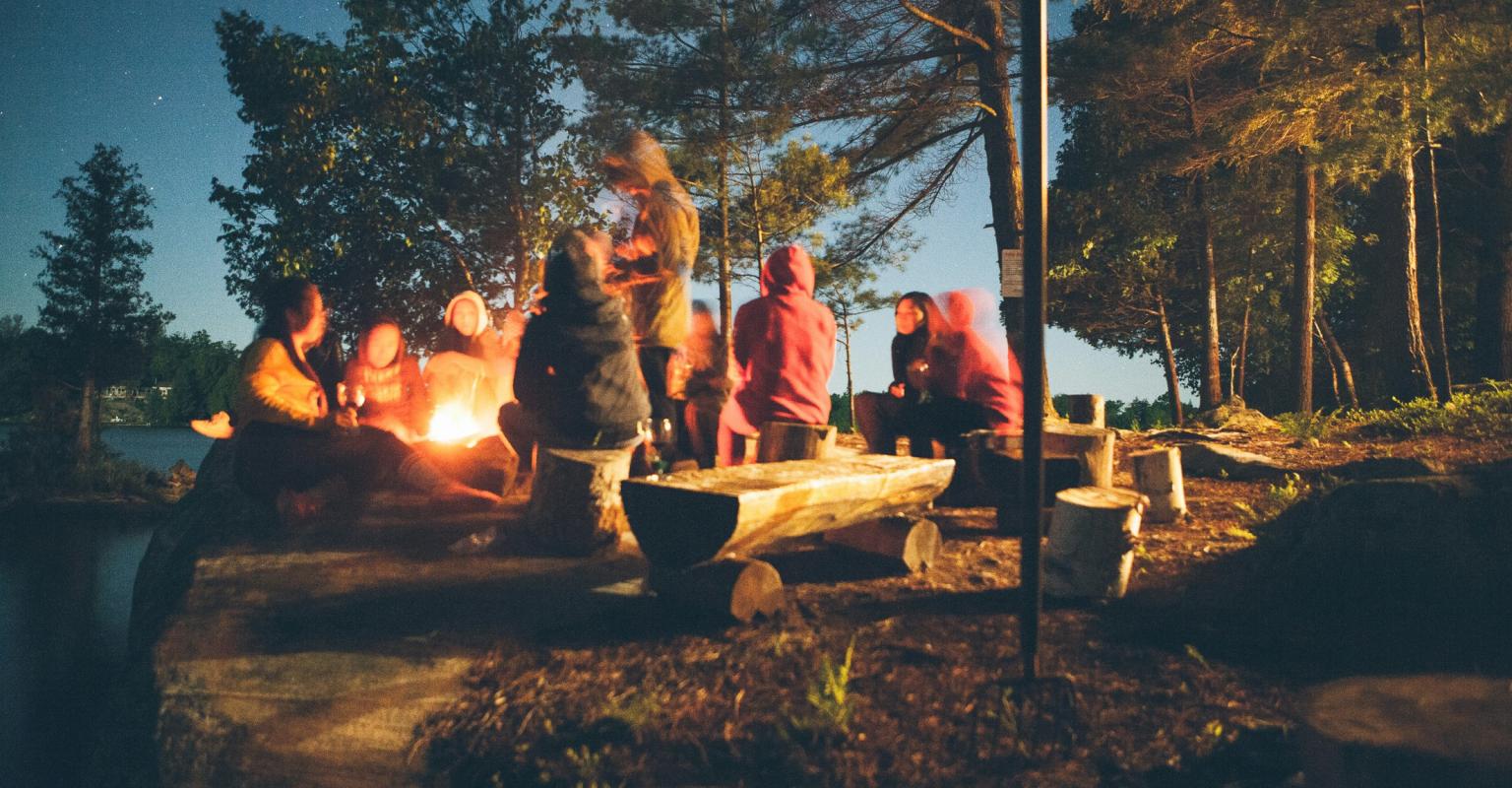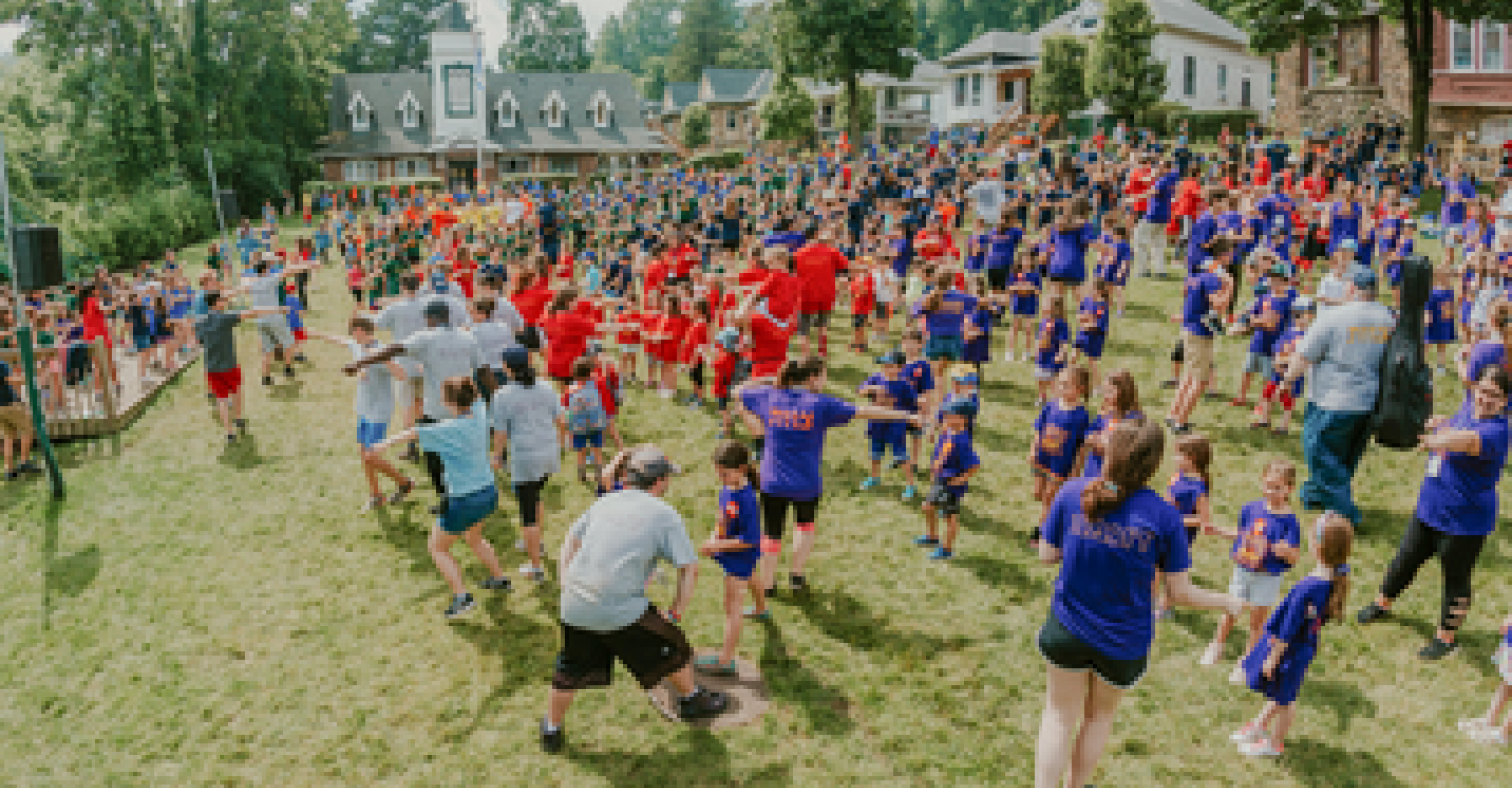Camp/Retreat Model: Yedidim
Temple Beth Sholom (TBS), Roslyn, NY
Model Summary:

Yedidim is a camp-inspired buddy/friendship initiative that fosters friendships among learners of different ages and engages the Yedidim (friends/buddies) in living Jewish life together and sharing everyday experiences. It is an organic model in which Yedidim share a variety of experiences together, woven into their everyday learning.
The model is designed to nurture caring and purposeful relationships. The pairs of Yedidim share many experiences that foster these relationships. For example, Yedidim get to know each other through interviewing, working together on shared projects, and just being next to each other doing everyday Jewish things like singing Hatikvah by the flagpole or davening together at a Rosh Hodesh service.
This model encourages the questions of the learners. In particular, the younger learners are given a regular opportunity to ask their older Yedid mentor about things on their mind - about Judaism and about life.
“Yedidim” has been very successful at TBS. The students look forward to this camp-like, less structured environment. New and meaningful relationships have formed among younger and older students. Older students have a tremendous satisfaction mentoring younger students. Learning becomes more meaningful.
Who are the Learners?
Learners are in grades 1-6. A child in an older grade is paired with child in a younger grade as follows:
-
Aleph/1st graders with Vav/6th graders
-
Bet/2nd graders with Daled/4th graders
-
Gimel/3rd graders with Hay/5th graders
The cohort is the combination of the total number of learners in the two “paired grades.” There are about 60-75 learners in each cohort.
Each child is a Yedid or Yedida; each partnership,Yedidim. The community of partners is called Yedidim.
Who are the Educators/Learning Facilitators?
The educators are the classroom teachers of each grade. The older Yedid serves as a mentor to the younger Yedid.
When Does the Learning Happen?
In general, it happens during regular school hours, but it does also happen during holidays and Shabbat and life cycle events and at other times beyond the “traditional” school hours. Yedidim is woven into the everyday learning.
Where Does the Learning Happen?
Most learning takes place in and around the synagogue building. In addition Yedidim have been together on trips and retreats.
What is the Learning? How is it Designed?
Learning focuses on Jewish life and on building relationships and community through shared meaningful Jewish experiences. The learning is about how to create and be in an inter-age relationship that helps each child feel part of a larger inter-age school community as well as build a sense of belonging to the broader congregational community. Learning is content rich, including many different foci and multi-level experiences. It is designed to be accessible to learners of different ages and developmental levels.
Learning experiences include:
-
sharing a prayer experience. On each Rosh Hodesh, for example, learners engage in formal learning and then work together on a project around a holiday or important Jewish value.
-
hearing a story together
-
working together on a social action project such as making care packages for Israeli soldiers
-
celebrating a life cycle event
-
participating together in a holiday celebration
-
exchanging notes of appreciation for each other, or sending good wishes to each other for an upcoming holiday or a birthday
-
sitting next to each other at school-wide events or synagogue happenings
-
families of the Yedidim interacting and learning together and to support the deepening of the relationship between the Yedidim
Older Yedidim will learn mentoring skills through their role in partnering with younger learners.
A lead teacher meets regularly with the appropriate grade level teachers of the Yedidim pairs to identify organic experiences that can bring Yedidim together for shared learning and experiences. For example, the lead teacher meets with the Aleph and Vav teachers to plan Yedidim experiences.
When designing the learning it is important to:
-
Create a collaborative structure for planning and assessing the learning.
-
Spend time creating the matches for the pairings and consider grouping two pairs together in a regularized way, so that if one child is absent, his/her partner still can join with other Yedidim in a natural way so that all can feel included every time.
-
Pay attention to building relationships as a cornerstone of each and every interaction.
-
Give extra support to the older child in the pairings in terms of empowering and celebrating her/him as a mentor for the younger child.
What Were You Trying to Achieve with this Model?
TBS has built an innovative culture, starting with their early involvement in ReImagine almost a decade ago. Yedidim is one of the newer models they have created over this time period.
As TBS has prioritized getting families involved in Jewish overnight camp and as they as a congregation have long understood camp to be a very important part of the fostering of strong Jewish identity and social relationships, TBS became part of the Camp Connect Initiative through The Jewish Education Project and the Foundation for Jewish Camp. One of the goals of Camp Connect is to promote camp inspired learning. TBS decided to build on the wonderful sense of friendship and inter-age community that is a positive feature of many camp experiences.
TBS launched this model with the support of their Educational Leadership Team, which included key lay partners interested in camp. Their director of Lifelong Learning was a strong proponent and inspiration for the initial launch of Book Buddies, the forerunner of Yedidim, which focused on the partners sharing a book together.
The present model evolved from this book based shared reading program to a multi-faceted experiencing of Jewish life together. There are frequent check-ins with teacher facilitators as well as with learners and parents to hear their feedback about Yedidim. In response to feedback, Temple Beth Sholom shifted which grades partnered and even which grades participate in Yedidim. They also shifted from a more formal program based learning to a more informal, shared experience organic model.
Key First Steps and Recruitment Plan:
All learners in the targeted grades are part of Yedidim. TBS shares success through including photos and comments of learners in their synagogue bulletin. Parents receive updates about what is happening in Yedidim as part of the regular email communications between teachers and parents. They also have a prominent bulletin board in the school hallway dedicated to displaying photos and projects and comments of Yedidim and to highlighting this initiative. Parents are frequently walking the halls to view the beautiful pictorial displays of their children at “Yedidim”.
Role of Governance and Clergy:
The clergy are all supportive of Yedidim and often are present either as facilitators, as part of an experience or simply to lend their support and encouragement to the ongoing partnerships between learners and to their shared projects.
Budget:
There is not a separate budget for Yedidim. The salary for the lead teacher, for the staff who document the model and facilitators is part of their regular salary, supplies are part of the regular supply budget, etc.
Hiring Needs:
Ideal educators for this model include people who are good collaborative partners, people who work well with learners of various ages, and people who are creative and open to thinking about new possibilities for deepening caring relationships. A staff person is assigned to keep these displays up to date, collect pictures, and keep flyers together. A lead teacher coordinates Yedidim. Another staff member documents the model and takes photos.
Relationship of Model to Congregational Learning System:
Yedidim is woven into the everyday learning at TBS. There are other models concurrently at TBS, such as Shabbat Family Study and Madrichim, and learners and families often participate in more than one model.
How Do You Describe Your Congregation?
TBS is a Conservative congregation, has 800 membership units, 2 rabbis and 1 cantor, a Director of Education, a Pre-school Director, and a Hebrew High School Director.
Supplementary Materials Include:
- Models-In-Action
- Relationship Building
- After School and Beyond
- Congregational Learning
- Early Childhood
- Educator Training
- Camp
Discover more

The Camp/Retreat Model provides learners with intense, immersive Jewish learning environments.

Temple Israel New Rochelle (TINR), NY. Chavaya uses camp language, feel, and a hands-on approach. Students form eidot (communities) to experience chuggim (electives) such as art, drama, and music.

Rabbi Ami Hersh and David Bryfman explore the magic of Jewish day camps.
